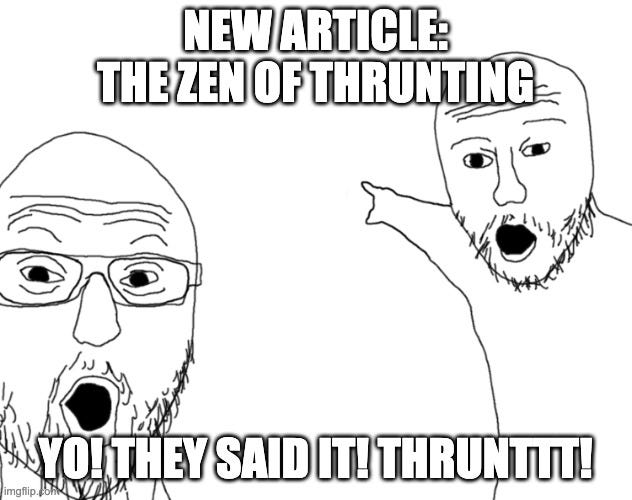The Zen of Thrunting
We don't guess, we thrunt.
Abstract
Just as Tim Peters distilled Python’s essence into 19 guiding aphorisms and Justin Ibarra distilled security wisdom into principles, these 19 aphorisms embody the core philosophy of effective threat hunting (aka thrunting). Each principle stands alone yet intertwines with others, creating a philosophical framework for the modern threat hunter (aka thrunter). 🐑
Not sure why we call it thrunting?
Start here: The Case for Thrunting
These principles reflect lessons learned from the trenches, guiding new and seasoned hunters alike.
This collection shares its name with a musical piece that explores these same themes through sound, reinforcing the depth, complexity, and creativity inherent in thrunting:
https://suno.com/song/12a5d1d5-f001-4412-855d-437667129894
The Zen of Thrunting
Assume breach and prove otherwise.
Proactive hunting is better than reactive incident response.
Focus on behaviors, not just static indicators. (Think top half of the Pyramid of Pain)
Raw data is valuable, but context makes it powerful.
Know what’s normal before you try to spot anomalies.
Question everything, but hunt and document with confidence what you can explain.
Attribution is interesting, but impact is what really matters.
Patterns (correlation) can point you in the right direction, but understanding the cause reveals the real story.
Tools enhance hunting, mindset defines success.
Curiosity is a hunter’s greatest tool.
Every hunt has an outcome (even if it isn’t finding the next bad guy.)
Share what you know. Today’s learner is tomorrow’s mentor.
Structured hunting yields the best results. Make it a habit.
Persistence beats perfection.
Automation and AI empower the hunter, not replace them.
If a hypothesis is hard to explain, rethink it.
Threat actors keep evolving; your techniques should, too.
It’s never too late to start thrunting.
The best hunters never stop learning.
What resonates with you? Drop a comment below.
Remember: Threat hunting is a journey, not a destination. Stay curious, keep learning, and happy thrunting!






